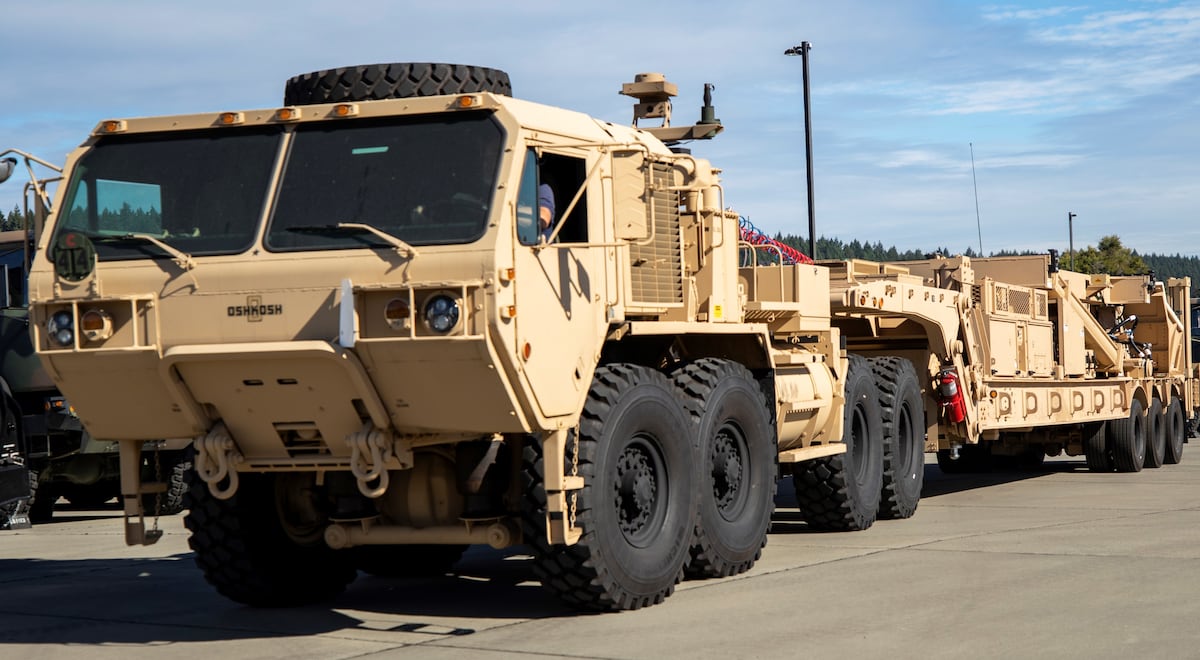On Monday, President Donald Trump rescinded an executive order put in place during the early days of the Biden administration that broadened protections for trans people’s right to serve in the U.S. military. The repeal does not put anything into motion immediately, but it does remove a barrier to limiting trans people’s right to serve.
During Trump’s first administration, his notorious July 2017 tweet announcing his intent to ban trans people never resulted in the automatic removal of anyone from service. In fact, his administration grandfathered in thousands of troops who had already transitioned while in uniform, despite proclaiming that trans troops were a threat to unit cohesion.
What Trump did do, however, was put service members back into the closet with the threat of involuntary separation, said Aaron Belkin, a political science professor and former director of the Palm Center, a think tank that advocated for LGBTQ+ troops and the repeal of Don’t Ask, Don’t Tell.
“And we know that when people are forced into the closet, there are all kinds of consequences that follow, both for them personally and also for the organization,” Belkin told Defense One.
Now, the uncertainty of those years is back, as transgender service members wait to find out what kinds of restraints might be put on their ability to serve openly, or if they can stay in uniform at all.
“Republican voters, and the Republican Party and the president himself, have been very clear for a long time that they place politics above military readiness,” Belkin said. “So they supported banning gay troops from the military when it was clear that inclusion strengthened the military, and now they’re at it again, banning transgender troops from the military, even though the research is clear that inclusive policy promoted readiness and firing people just for who they are undermines military effectiveness.”
DOD does not have a current estimate of the number of transgender service members, a defense official who was not authorized to speak on the record told Defense One.
Various estimates over the past two administrations have placed the number at around 15,000, with 9,000 of those in the active-duty component.
“The Department of Defense is fully committed to carrying out the orders from our Commander-In-Chief, and is doing so immediately under his leadership,” a defense official, who was not authorized to speak on the record, said in a statement released Monday night intended to cover any executive actions Trump took on day one.
Trump did not order the Pentagon to issue an updated instruction to govern policy for transgender service members, but the concern, Belkin said, is that a second Trump transgender ban could be even more harsh than the first one.
“We’ve yet to see what the policy will look like on paper, but we know the rough outlines and the thrust of what’s going on, which is injury for the sake of injury and injury for the sake of transphobia, right?” he said.
Current policy, as of April 2021, states:
- No one who meets current accessions or retention standards will be barred from service on the basis of gender identity.
- Troops diagnosed with gender dysphoria are able to create a treatment plan and, if approved by their medical provider, medically transition to their preferred gender and have their gender marker changed in the Defense Department’s personnel system.
- Potential recruits diagnosed with gender dysphoria may be prevented from joining the military along the same guidelines that govern disqualification for current depression, anxiety or other mental health challenges.
- Recruits who have already transitioned must have been stable in their preferred gender for at least 18 months, as certified by a medical provider.
Trans people have joined the military and served openly since then-Defense Secretary Ash Carter lifted a true ban on open transgender service members in 2016.
But from April 2019 to January 2021, people with a history of transgender treatment were barred from joining, and people with a history of gender dysphoria were permitted to serve only if they had been stable in their biological sex for the past 36 months. If they were diagnosed with gender dysphoria while serving, they were not permitted to transition and could be involuntarily separated if their medical providers determined transitioning was medically necessary for their mental health.
Troops who had been diagnosed with gender dysphoria before April 12, 2019, were allowed to continue their treatment plans. Recruits who had signed enlistment contracts or been selected for a commissioning program prior to that date were also allowed to join, as long as their medical provider could certify they had been “stable” in their preferred gender for at least 18 months.
“I think this is going to be closer to an all-out ban,” Belkin said of the forthcoming policy.
It’s unlikely any changes will be implemented until the Trump administration has a permanent defense secretary in place. On Monday, the Senate Armed Services Committee advanced Trump’s pick, Pete Hegseth, for a vote before the full Senate.
Read the full article here








Leave a Reply